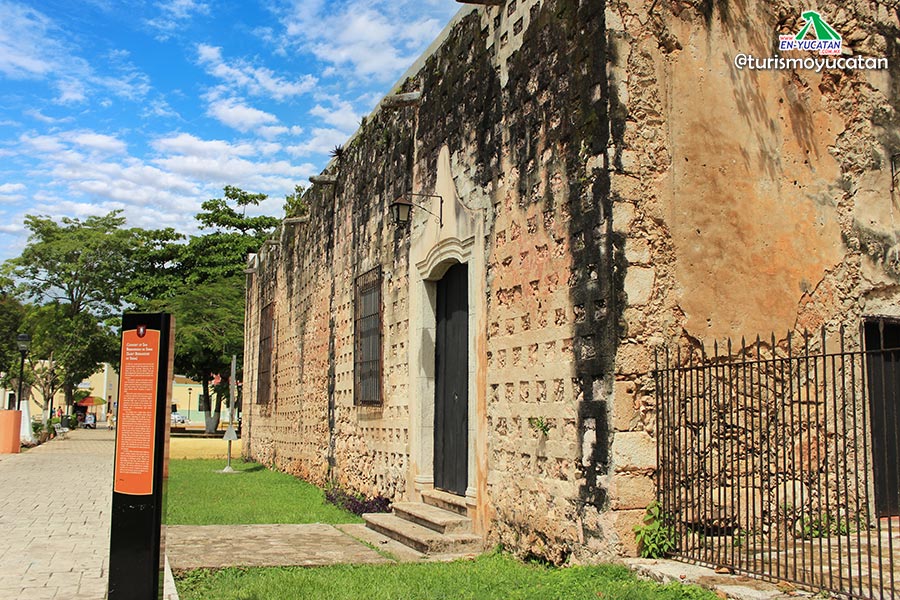Among its attractions in the imposing Convent of San Bernardino, with its majestic proportions and discreet Franciscan style. The main altarpiece was worked in wood painted in gold, with sculptures and motifs that give it an unmistakable baroque feel.
San Gervasio church with it’s a glorious tower, brandishes the cannons witch served to recover the city in 1848, from the hands of the rebel Indians who started the Caste Wars. The streets proudly conserve this glorious past.
In 1552 the construction of the church and convent began under the direction of fray Hernando de Guevara, Francisco de la Torre and Fray Juan de Merida. This last one dropped the sword to join religious life.
The Franciscan order build and founded the convent.

The temple convent and Indian chapel were finished in 1560 according to a stone plaque with the Francisca shield placed in the main façade, the construction of the water wheel cover, however, is date to 1613.
Above the main entrance to the temple is visible the shield of the Franciscan order and underneath in the inscription “MDLX” mearning 1560, year of consecration and opening to the people of the temple- The facade of the convent has a long arched hallway and renaissance style stone carved door.
The temple has a single nave, and in the inside there’s a superior niche, above the tableau, depicting and image of Our Lady of Guadalupe. Also can be seen beautiful wooden tableaus, craftily carved in different expressions of baroque style.
It is impressive both by its size and by its fine details. To the right, another tableau with a small image of Saint Teresa of Jesus and to the left Our Lady of Sorrows with a wooden tableau that of the lower part has carved the representation of the Annunciation and the Conception of the Eternal Father and the Holy Mary.
In 1755 the convent was secularized and abandoned by the Franciscan order, wich prompted the deterioration of the cloister.
In 1978, while restoring some tableaus, Father Andres Lizama Ruiz had them removed and discovered on the back some painting, of unknown author. There’s no knowledge of why they were hidden, but they are believed to belong to the 16th century. The entire architectural complex consists of a church, chapels, ex-convent atrium and orchard, and it occupies a surface of 152,000 Sq Ft.
